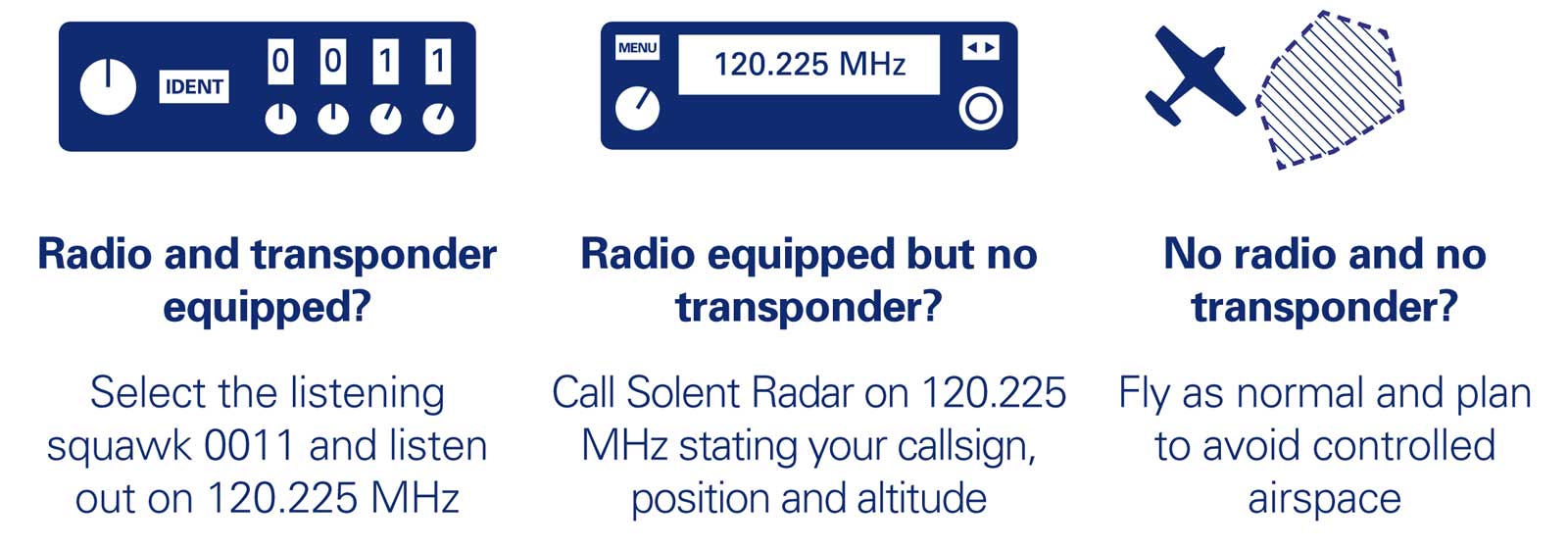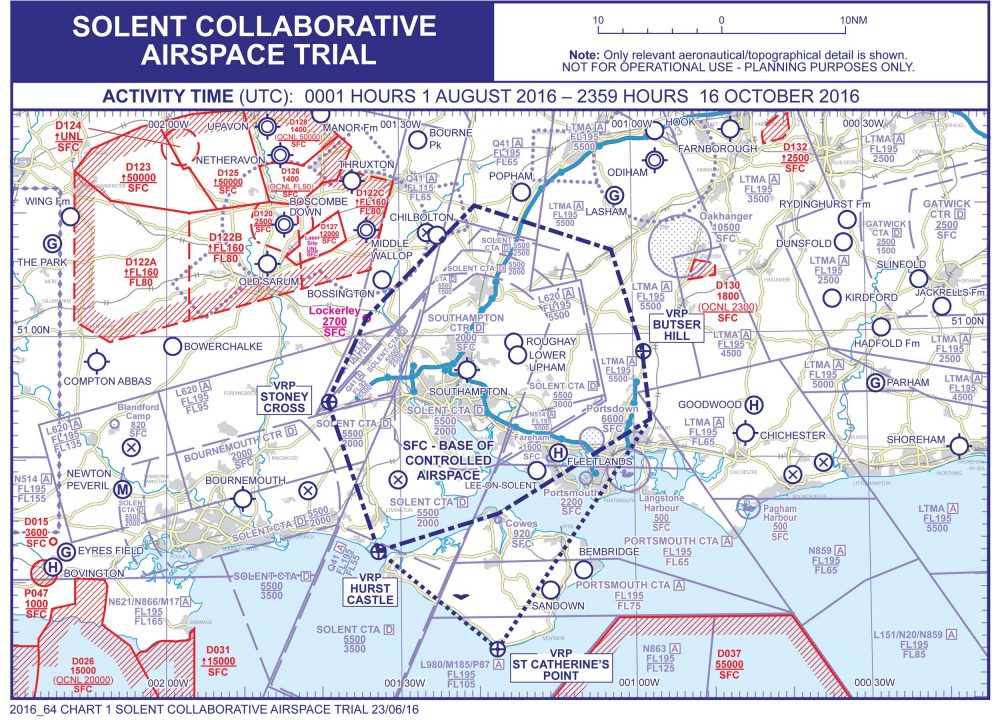A trial is to take place in the Southampton Control Zone and the Solent Control Areas from 1 August to 16 October 2016 to attempt to reduce the number of infringements into controlled airspace.
Pilots flying within Class G airspace depicted in the chart above are asked to take part in the trial.
“There is no obligation to participate, but the CAA will take into account the participation of any aircraft involved in an infringement of Controlled Airspace during the trial, and those participating can expect a more sympathetic process than those who do not,” says AIC Y 061/2016 which sets out the details of the trial.
The CAA says there were around 1,000 infringements during 2015 with 125 in the Southampton Control Zone and Solent Control Areas, the most in any area of controlled airspace in the UK. The ‘hotspots’ are the northern edge and north west corner but infringements have also been recorded elsewhere.
“We have not made any changes to the controlled airspace nor introduced a Transponder Mandatory Zone or Radio Mandatory Zone,” said the CAA. “But we are asking pilots to join the trial to see if a simple change of practice can help reduce the serious safety risks caused by these infringements.”
What pilots need to do:

Radio and transponder equipped aircraft
Select the listening squawk 0011 with, where equipped Mode C (ALT) and listen-out on 120.225 MHz
Radio equipped but non-transponder equipped aircraft
Call Solent Radar on 120.225 MHz stating only the callsign, position and altitude of the aircraft
Non-radio/non-transponder equipped aircraft
Pilots of these aircraft should operate as normal and plan to remain clear of controlled airspace.
Success will be measured by a reduction in the number of airspace infringements of the Southampton CTR and Solent CTA whilst having as minimal impact as possible on the operation of all aircraft, commercial and General Aviation, within the designated area.
Lee-on-Solent Aerodrome
Due to the proximity of the aerodrome at Lee-on-Solent to the edge of controlled airspace, pilots operating in the Lee-on-Solent visual circuit should squawk 4306 for conspicuity and to enhance the situational awareness of controllers.
When inbound to Lee-on-Solent or Fleetlands, aircraft leaving the Solent Rader frequency (either having received a service or monitoring the frequency)and selecting Lee Radio or Fleetlands Information are to select transponder code 4306 prior to joining the visual circuit. As a guide, this should be done at any of the following locations: Calshot, Cowes, Spinnaker Tower or when crossing the M27. On leaving the visual circuit, and once it is safe to do so, pilots should operate in accordance with the trial, above.
Other Aerodromes
Pilots of aircraft operating within the visual circuits of other aerodromes that lie within the Collaborative Trial Area are, if able, to squawk 7000 (or as directed by Air Traffic Control). On leaving the visual circuit, and once it is safe to do so, pilots should operate in accordance with the trial.
Gliders operating from Lasham, Parham and Lee-on-Solent
Gliders operating from Lasham, Lee-on-Solent, and Parham with turning points along the edge of the Solent Collaborative Trial Area are not required to comply with paragraph 4 [the trial – Ed] during manoeuvres at these points which may result in flight within the Trial Area. Furthermore, during gliding competitions, gliders are not required to comply with paragraph 4 when using turning points within the Solent Collaborative Trial Area which have been notified to Solent Radar by the Competition Organiser.
CAA announcement
Download AIC Y 061/2016
FLYER forum discussion













